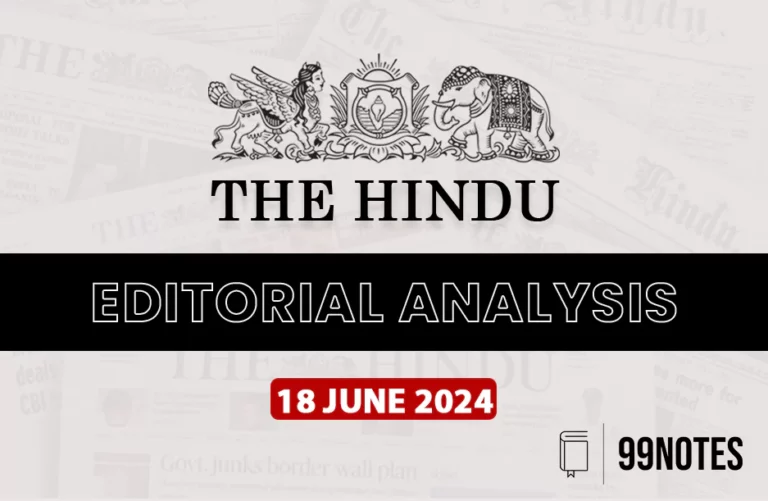8 November 2024 : Daily Current Affairs
1. ‘Rules cannot change midway of public services recruitment’
(Source – The Hindu, International Edition – Page No. – 6)
| Topic: GS2 – Governance |
| Context |
| The Supreme Court ruled that eligibility criteria in public service recruitment cannot change mid-process, ensuring fair and transparent selection.Any adjustments must align with constitutional principles of equality and non-discrimination under Articles 14 and 16. |
Unchanging Criteria Once Recruitment Starts
- Eligibility criteria set at the start of a recruitment process cannot be changed midway unless explicitly allowed by existing rules or specified in the recruitment advertisement.
- The “rules of the game” include qualifications and methods of selection and are binding on recruiting bodies throughout the process.
| The “Rules of the Game” Doctrine |
| The “rules of the game” doctrine mandates that recruitment criteria and processes in public service cannot be altered once a recruitment cycle has commenced. It is rooted in the principles of fairness, transparency, and consistency, ensuring that all candidates are evaluated under the same standards. Changes to eligibility criteria or selection methods during the process could lead to inequality and disadvantage candidates who applied based on initial requirements. This doctrine is grounded in Articles 14 and 16 of the Indian Constitution, which protect rights to equality and non-discrimination in public employment.  |
Alignment with Constitutional Principles
- Any changes in eligibility criteria must adhere to Articles 14 and 16 of the Constitution, ensuring equality and non-discrimination in public employment.
- The court highlighted that criteria alterations must meet tests of non-arbitrariness and rationality.
Candidate Rights and Appointment
- Being on the select list does not guarantee a candidate’s appointment, even if vacancies exist, but the state cannot arbitrarily deny appointments to selected candidates.
- The burden of justification lies with the state if a selected candidate’s appointment is denied.
Transparent and Fair Process
- The judgement promotes a transparent, rational, and fair recruitment process, reinforcing accountability and non-discrimination in public services.
| Practice Question: Discuss the significance of the “rules of the game” doctrine in public service recruitment in light of the recent Supreme Court ruling. How does this doctrine uphold the principles of equality and non-discrimination under Articles 14 and 16 of the Indian Constitution? (250 Words /15 marks) |
2. Can the state acquire all private property?
(Source – The Hindu, International Edition – Page No. – 10)
| Topic: GS2 – Indian Polity |
| Context |
| The Supreme Court has redefined the scope of Article 39(b), ruling that not all private resources qualify as “material resources of the community” for redistribution by the state.This judgement shifts from a socialistic model to one emphasising a liberalised, market-based approach. The decision balances government authority with property rights. |
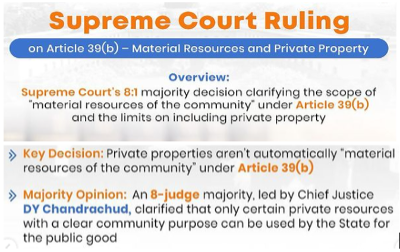
Constitutional Provisions
- Part IV of the Indian Constitution includes the Directive Principles of State Policy (DPSP), which guide the government in achieving social and economic justice.
- Article 39(b) of the DPSP mandates that the “ownership and control of material resources of the community” must be distributed to best serve the common good.
- Originally, the right to property was a Fundamental Right under Articles 19(1)(f) and 31, with compensation required for government acquisition.
- The 25th Constitutional Amendment in 1971 introduced Article 31C, exempting laws made under Articles 39(b) and (c) from invalidation due to violations of Fundamental Rights, including the right to property.
- After the 1978 amendment, the right to property was reclassified as a constitutional right under Article 300A, requiring public purpose and adequate compensation for acquisition.
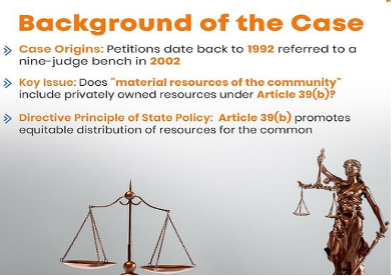
Earlier Judgments
- In State of Karnataka v. Ranganatha Reddy (1977), a seven-judge Bench upheld a Karnataka law nationalising private bus services.
- Justice V.R. Krishna Iyer argued that “material resources of the community” should encompass all national wealth, both private and public.
- This interpretation influenced later cases, such as Sanjeev Coke Manufacturing Company v. Bharat Coking Coal Limited (1982), upholding nationalisation of coke ovens, and Mafatlal Industries Ltd. v. Union of India (1996).
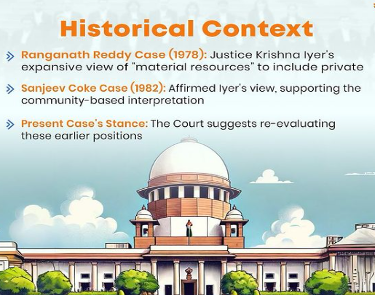
Current Ruling
- In Property Owners’ Association v. State of Maharashtra, a seven-judge Bench referred the interpretation of Article 39(b) to a nine-judge Bench.
- The majority opinion (8:1) disagreed with Justice Iyer’s view that all privately-owned resources could be used as material resources for the common good, finding it outdated in light of India’s shift from a socialist to a liberalised economic model.
- To qualify as a “material resource of the community,” a resource must be both “material” and serve community interests, evaluated based on factors like scarcity, community impact, and the potential harm of private concentration.
- Certain resources (e.g., forests, mines) can be deemed community resources even if privately held, but not all private resources qualify.
- Justice Nagarathna partially agreed with the majority but believed all private resources, except personal items, could become community resources via nationalisation.
- Justice Dhulia dissented, supporting Iyer’s earlier interpretation, suggesting that the legislature should determine the distribution of resources.
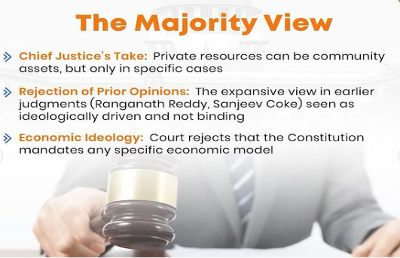
Way Forward
- India’s economy has shifted from socialism to a market-oriented model, resulting in growth and poverty reduction, though inequality remains a concern.
- The ruling aims to safeguard small farm and forest lands of marginalised communities from government acquisition, emphasising sustainable use and equitable distribution of material resources.
| Practice Question: Discuss the significance of Article 39(b) of the Indian Constitution. How does the recent Supreme Court judgement alter the interpretation of “material resources of the community” and its implications on national economic policy? (150 Words /10 marks) |
1. Removing bran on millets reduces the benefits of eating them: study
(Source – The Hindu, International Edition – Page No. – 4)
| Context |
| A recent study shows that removing the bran from millets reduces their nutritional content, lowering protein, fiber, and minerals while raising glycemic load.This process diminishes the health benefits of consuming millets. |

Impact of Debranning on Millets’ Nutritional Value:
- A recent study published in Nature Springer highlights the impact of removing the bran (debranning) from millets, revealing it decreases their protein, dietary fibre, fat, mineral, and phytate content.
- Debranning increases the carbohydrates and amylose content, which can raise the glycemic load, potentially negating millets’ health benefits.
- Conducted by the Madras Diabetes Research Foundation and the Indian Institute of Millet Research, the study advocates for consuming millets as whole grains to retain their nutritional profile.
- Millets are rich in minerals like calcium and iron, and contain beneficial phyto-chemicals, offering anti-aging, anti-carcinogenic, and antioxidant properties.
- Polishing millets, common in markets, enhances shelf life but increases glycemic index, reducing benefits for people with diabetes.
- The study urges making unpolished, whole millets more widely available for health benefits.

2. India should be part of RCEP, CPTPP: NITI Aayog CEO B.V.R Subrahmanyam
(Source – The Hindu, International Edition – Page No. – 12)
| Context |
| India’s NITI Aayog CEO advocates for joining the Regional Comprehensive Economic Partnership (RCEP) and the Comprehensive and Progressive Agreement for Trans-Pacific Partnership (CPTPP) to enhance trade opportunities, particularly for MSMEs.He also noted that India lags in leveraging the “China plus one” strategy. |
Regional Comprehensive Economic Partnership (RCEP):
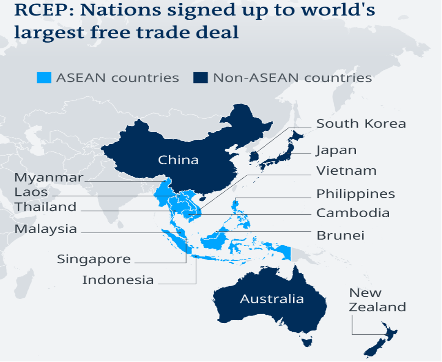
- Membership: RCEP includes 15 countries, comprising the 10 ASEAN nations (Brunei, Cambodia, Indonesia, Malaysia, Myanmar, Singapore, Thailand, the Philippines, Laos, and Vietnam) and five additional FTA partners (China, Japan, South Korea, Australia, and New Zealand).
- Objective: RCEP aims to establish a comprehensive economic partnership among members, facilitating trade, investment, and economic integration.
- Scope: It covers trade in goods and services, investment, intellectual property, e-commerce, and more.
- Significance: With over 2.2 billion people, RCEP forms the largest free trade agreement in the world by population.
- India’s Position: India withdrew from RCEP in 2019, citing concerns over trade deficits, protection for local industries, and potential impacts on its MSME sector.
Comprehensive and Progressive Agreement for Trans-Pacific Partnership (CPTPP):
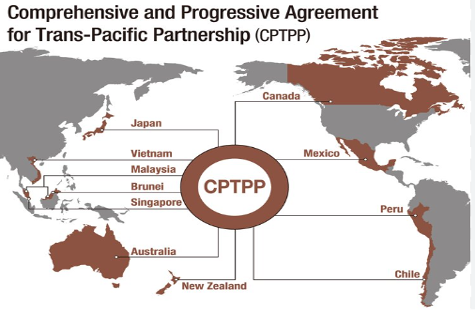
- Membership: CPTPP includes 11 Pacific Rim countries—Canada, Mexico, Peru, Chile, New Zealand, Australia, Brunei, Singapore, Malaysia, Vietnam, and Japan.
- It was formed after the United States withdrew from the original Trans-Pacific Partnership (TPP) agreement.
- Objective: CPTPP aims to promote free trade, sustainable growth, and deeper economic integration among member countries.
- Scope: The agreement includes standards for labour, environment, intellectual property, and data flows, enhancing transparency and trade liberalisation.
- India’s Position: India is not a member, but inclusion could provide access to major trade markets and diversify exports amidst global shifts.
3. International Solar Alliance: Ambitious Goals, Modest Progress, and India’s Strategic Challenge
(Source: Indian Express; Section: Explained: 15)
| Context: |
| The article assesses the International Solar Alliance’s limited progress in advancing solar energy in developing nations, highlighting its strategic importance for India’s leadership in the Global South. |
Analysis of News:
What is International Solar Alliance (ISA)?
- The International Solar Alliance (ISA) is an intergovernmental organization that was launched in 2015, by the Prime Minister of India and the President of France, at the United Nations Climate Change Conference held in Paris.
- ISA is an action-oriented, member-driven, collaborative platform for increased deployment of solar energy technologies.
- The ISA is guided by its ‘Towards 1000’ strategy, which aims:
- To mobilize USD 1000 billion of investments in solar energy solutions by 2030
- To deliver energy access to 1000 million people using clean energy solutions
- To install 1000 GW of solar energy capacity.
- To mitigate global solar emissions to the tune of 1000 million tonnes of CO2 every year.
- Vision: Let us together make the sun brighter.
- Mission: Every home, no matter how far away, will have a light at home.
- Headquarter: National Institute of Solar Energy (NISE) in Gurugram, India.
Limited Progress in Deployment
- The ISA, intended as a facilitator rather than a direct project developer, was to help countries overcome barriers to solar energy adoption. However, after nearly a decade, it has had limited success.
- No ISA-supported projects are operational yet, with Cuba’s 60 MW project being the first on track. Many African and Latin American countries are at preparatory stages, showing the slow pace in ISA’s mission.
Global Solar Growth vs. ISA’s Impact

- Solar power has grown significantly worldwide, but this growth is concentrated in a few countries like China, which alone accounted for 62% of the global solar capacity addition in 2023.
- Smaller developing countries struggle with entry barriers to solar deployment, including policy and regulatory instability, which ISA has been addressing but with limited immediate impact.
Addressing Barriers in Developing Nations
- In developing regions, particularly Africa, ISA faces challenges like the absence of local developers and foreign investor concerns over policy stability.
- ISA’s initiatives, like STAR centers, aim to build local expertise and capacity, and ISA leaders suggest that the groundwork has been laid for future growth, with several countries now preparing to launch solar projects.
The Strategic Importance of ISA for India
- For India, ISA plays a dual role — promoting solar energy and advancing India’s diplomatic influence in the Global South. With ISA headquartered and largely funded by India, it is an essential part of India’s outreach to countries needing reliable energy access.
- Yet, the ISA’s lack of progress reflects on India’s global leadership aspirations, particularly as Prime Minister Modi advocates for ISA’s mission on international platforms.
Conclusion: Challenges and the Path Forward
- Despite ISA’s strategic potential, its performance has been hindered by underfunding, staffing issues, and limited engagement with countries in need.
- Addressing these challenges will be crucial if ISA is to meet its ambitious goal of deploying 1,000 GW of solar energy by 2030 and become an effective vehicle for sustainable energy in developing regions.
| How can ISA effectively steer its future course of action? |
| To effectively steer its future course of action, ISA can consider the following strategies: Increase collaboration: The collaboration with international organizations, governments, and private sector entities will help the organization leverage resources and expertise in the solar energy sector. Expand membership: Expand the membership by engaging with more countries, especially those that have a high potential for solar energy. This can help to increase the reach and impact of the organization. Implement policy reforms: Focus on implementing policy reforms in member countries to remove barriers to the adoption of solar energy by including providing incentives and reducing subsidies for fossil fuels. Facilitate financing: ISA can facilitate financing for solar energy projects in member countries by establishing a fund or working with international financial institutions. Foster innovation: ISA can encourage and promote innovation in the solar energy sector by supporting research and development activities and providing a platform for sharing best practices and knowledge. |
| PYQ: Consider the following statements: (2016) 1) The International Solar Alliance was launched at the United Nations Climate Change Conference in 2015. 2) The Alliance includes all the member countries of the United Nations. Which of the statements given above is/are correct? (a) 1 only (b) 2 only (c) Both 1 and 2 (d) Neither 1 nor 2 Ans: (a) |
| Practice Question: Critically evaluate the performance of the International Solar Alliance (ISA) in accelerating solar energy deployment in developing countries. How does its progress reflect on India’s diplomatic leadership in the Global South? (250 words/15 m) |
PRELIMS FACTS
1. Revival of Airships: Overcoming Buoyancy Challenges to Unlock Sustainable Cargo Transport
(Source: Indian Express; Section: Explained; Page: 15)
| Context: |
| The article explores renewed efforts to make airships viable for cargo transport by addressing longstanding buoyancy challenges and leveraging their eco-friendly advantages. |
Analysis of News:
Introduction to Airships
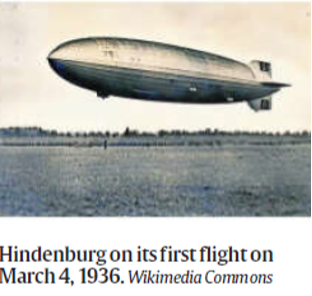
- Airships were the first vehicles to achieve controlled, powered flight, enjoying a brief period of popularity in the early 20th century as a potential means for mass transport.
- However, technological limitations and rapid advancements in airplane technology caused the decline of airships as a viable transport option. Today, they serve niche roles in advertising, surveillance, and tourism.
- Recently, there has been renewed interest in overcoming historical challenges, particularly buoyancy control, to make airships suitable for cargo transport.
Mechanics of Airships
- Airships are classified as lighter-than-air craft, gaining lift through gases less dense than atmospheric air, such as helium or, historically, hydrogen.
- Early airships used hydrogen due to its low cost and high lifting capacity, but its flammability led to catastrophic incidents like the Hindenburg disaster, resulting in a shift to helium, a safer but expensive and scarce gas.
- For instance, it costs about $35 to fill a cubic meter of helium to lift just one kilogram, posing an economic challenge for large-scale use.
The Buoyancy Challenge
- One of the significant limitations for airship cargo transport has been controlling buoyancy to adapt to changing loads.
- Unlike airplanes, which use wings to generate lift and can adjust quickly, airships need a stable method to regulate buoyancy as they pick up or drop off loads.
- The most straightforward solution would be to release and refill helium, but the high cost and scarcity of helium make this impractical.
Promising Innovations
- Recent innovations aim to make airships viable for transporting heavy cargo. For example, Flying Whales, a French company, developed the LCA60T, a 200-meter helium airship that can lift heavy objects without needing specialized ground support by taking in water ballast mid-flight.
- This makes it suitable for transporting items like turbine blades, construction materials, and even prefabricated buildings to remote locations.
- In the U.S., Aeros has created a system intended to support floating warehouses for drones, potentially enabling sustainable e-commerce deliveries. However, some argue this technology may be too heavy and complex for regular use.
Environmental Potential
- As the aviation industry faces scrutiny over its carbon emissions, airships present an eco-friendly alternative.
- Unlike airplanes, which rely heavily on fossil fuels for lift, airships consume less energy and could access remote locations unreachable by ships or trucks, making them a potentially greener option for specialized transport needs.
- While commercial viability is still some years away, these advances position airships as a possible solution in a more sustainable transportation landscape.
2. Supreme Court restores DRI officers’ powers to recover dues under Customs Act
(Source: Indian Express; Section: Govt & Politics; Page: 07)
| Context: |
| The Supreme Court of India has overturned its 2021 ruling, affirming that officers of the Directorate of Revenue Intelligence (DRI) have the authority to issue notices and recover dues under the Customs Act, 1962. This decision, delivered by a bench led by Chief Justice D.Y. Chandrachud and Justices J.B. Pardiwala and Manoj Misra, effectively reinstates the DRI’s role as “proper officers” for enforcement purposes under Section 28 of the Customs Act. |
Analysis of News:
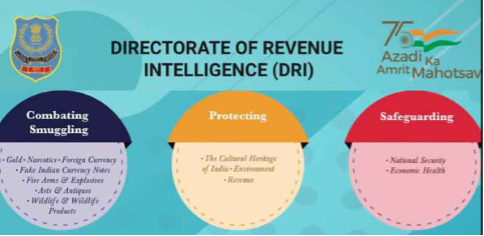
About Directorate of Revenue Intelligence (DRI):
- It is the premier intelligence and enforcement agency of the Government of India on anti-smuggling matters.
- It works under the Central Board of Indirect Taxes and Customs, Ministry of Finance, Government of India.
- It came into existence on December 4, 1957.
Functions:
- Collection of intelligence about smuggling of contraband goods, narcotics, under-invoicing, etc. through sources in India and abroad, including secret sources.
- Analysis and dissemination of such intelligence to the field formations for action and working on such intelligence, where necessary.
- Keeping watch over important seizures and investigation cases. Associating with or taking over the investigations which warrant specialized handling by the Directorate.
- Guiding important investigation/prosecution cases. Keeping liaison with foreign countries, Indian Missions, and Enforcement agencies abroad on anti-smuggling matters.
- To keep in liaison with C.B.I. and through them with the INTERPOL. To refer cases registered under the Customs Act to the Income Tax Department for action under the Income Tax Act.
- To keep statistics of seizures, and prices/rates etc. for watching trends of smuggling and supply required material to the Ministry of Finance and other Ministries.
- To study and suggest remedies for loopholes in law and procedures to combat smuggling.
- The DRI, with its Headquarters in New Delhi, has 12 zonal units, 35 regional units, and 15 sub-regional units.
Background of the Canon India Verdict (2021)
- In 2021, the Supreme Court in Canon India Pvt Ltd vs Commissioner of Customs ruled that DRI officers could not exercise the powers of a Customs officer unless specifically entrusted by the Central Government under Section 6 of the Customs Act.
- This restricted the DRI’s jurisdiction, questioning its authority to issue show-cause notices and take enforcement actions under the Act.
Basis for Overturning the 2021 Decision
- The Supreme Court’s latest ruling cites the oversight in the Canon India judgment, which failed to consider existing circulars and notifications from the Central Board of Excise and Customs (CBEC) that empowered DRI officers as “proper officers.”
- Notably, a 1999 circular and a 2011 notification authorized DRI officers to issue notices under Section 28 of the Customs Act. The bench, led by Justice Pardiwala, concluded that the Canon India decision did not align with the statutory scheme, necessitating this review.
Implications of the Verdict
- With this verdict, DRI officers, along with other authorized officers, can issue show-cause notices under Section 28, and all pending cases concerning this authority will be settled according to the new ruling.
- This reaffirms the DRI’s enforcement role, strengthening revenue intelligence and customs administration in India.

